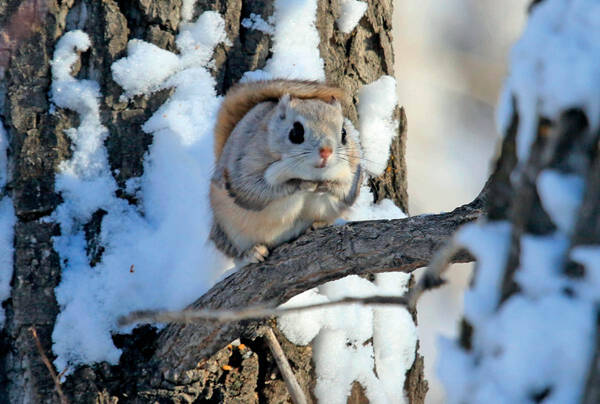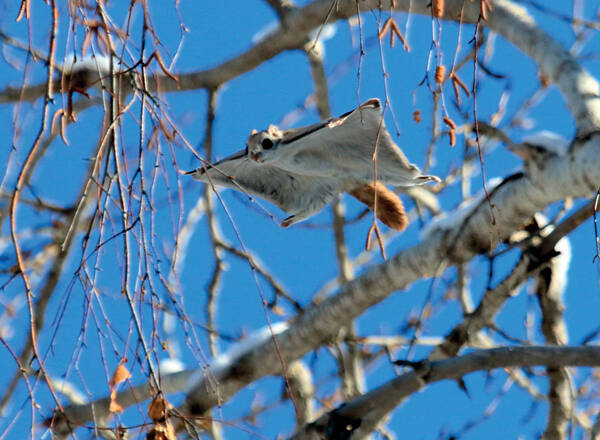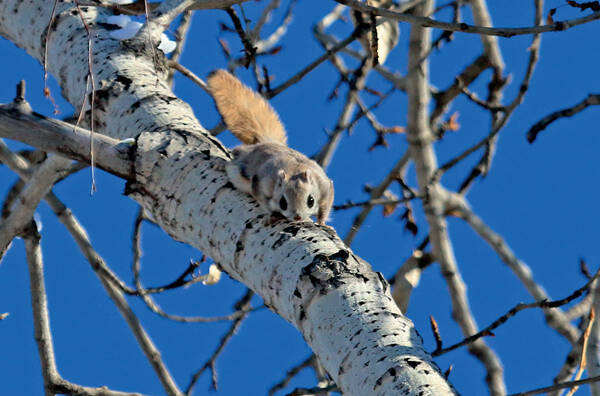Pteromys volans
IUCN
LCBasic Information
Scientific classification
- name:Pteromys volans
- Scientific Name:Pteromys volans,Siberian Flying Squirrel,Flying squirrel, flying squirrel, flying tiger, small flying squirrel
- Outline:Rodents
- Family:Rodentia Sciuridae F.Squirrel
Vital signs
- length:About 200 mm
- Weight:
- lifetime:
Feature
It is small and very flexible, with short and thick limbs, a flat tail, and two colors of fur in winter and summer: brown-gray in summer and yellow-gray in winter.
Distribution and Habitat
In China, it is distributed in the northwest and northeast regions, extending southward to the central part. Abroad, it is distributed in Russia, Mongolia, the Korean Peninsula, Japan, etc.
Flying squirrels live in temperate and cold temperate coniferous forests or mixed coniferous and broad-leaved forests. In Qinghai, they generally live in dense forest environments, and the main tree species in the habitat are spruce, white birch, black birch and poplar.
Appearance
Small flying squirrel. Has short, dense hair. The hair on the belly is pale white to beige. The hair on the back is gray, darker than on the belly. The feet are white on the belly and brown on the back. The tail is flat, with longer hair on the sides and light gray-black at the tip. The eyes are large and black.
Details
Flying squirrels do not hibernate. They are nocturnal and are active after dusk, but can occasionally be seen during the day. When disturbed during the day, they slowly crawl to the entrance of their caves. Some of them jump out and glide downwards. After landing, they quickly climb up the nearest tree trunk, and finally hide in the branches or dense branches. Some of them often look at the entrance of their caves for a while, and then jump out of the caves to glide or stay in the caves depending on the movements around them. They often climb trees or glide between branches. When gliding, they spread their tails flat, straighten their limbs, spread their leather wings, and float downwards, reaching as far as 50m.

The trees where the flying squirrels build holes and nests are mainly poplar and birch. The trees occupying the nests died soon because their pith was hollowed out. The flying squirrels lived in them. Over time, the holes became deeper, but the diameter of the holes remained unchanged. The size of the holes was constant, and only the number of holes for entry and exit increased from time to time. The bottom of the nest is mainly filled with mosses as nesting materials. The height of the flying squirrel's hole from the ground is irregular, ranging from 2-3m at the lowest to 6-7m at the highest.

Flying squirrels feed on pine nuts, berries, and young shoots of branches, as well as mushrooms. In late autumn, they often store nuts and other food for the winter.
Flying squirrels breed from April to June, producing one litter per year, with 2-4 pups per litter.
The natural enemies of the flying squirrel include carnivorous leopards, wild cats, weasels, and eagles and raptors.

In Finland, the flying squirrel is very common, but the population is still declining. Detailed studies show that the population has declined by 20-58% between 1980 and 2001. There are no areas of stable or increasing populations, and the population is expected to continue to decline in the future. In 2002-2005, the number of female flying squirrels in Finland was estimated to be 134,800-151,300 (95% confidence). The flying squirrel is extremely common in Russia and Hokkaido, Japan. The overall population of the species is declining.









